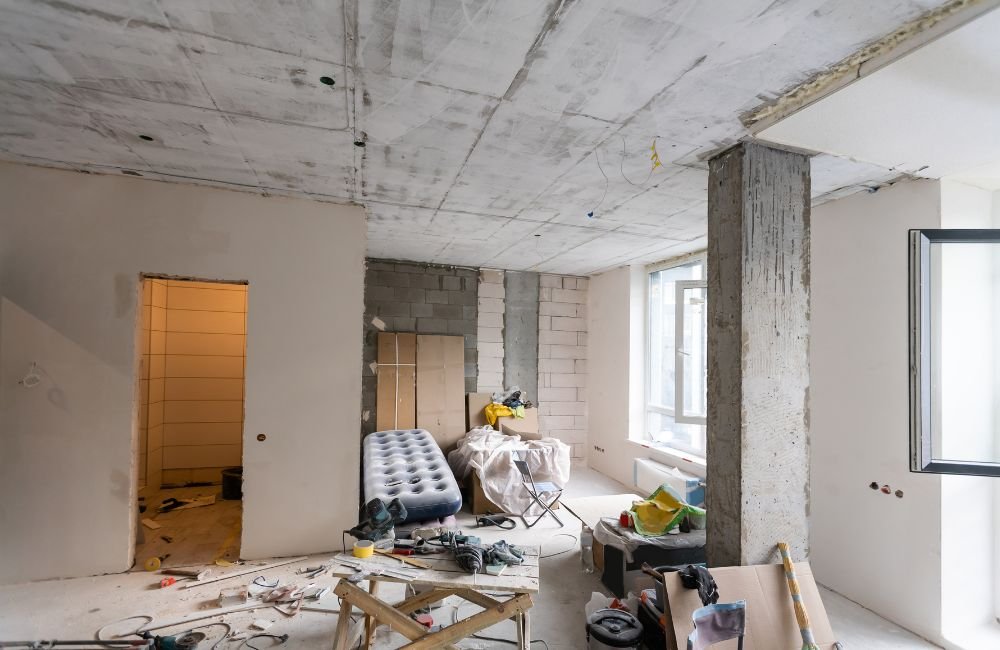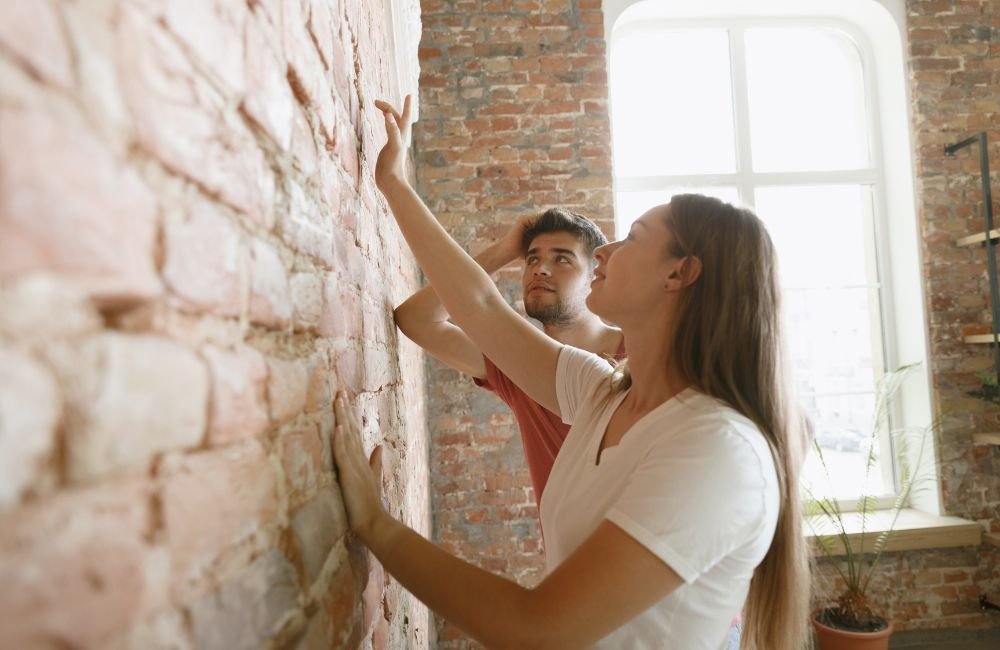Last Updated on October 31, 2025 by teamobn
Home decor and refurbishment can start as a DIY hobby. You’re building skills by restoring furniture and updating spaces. Getting certified as a home refurbisher adds credibility and professional knowledge. You’ll learn regulations, safety standards, and advanced restoration techniques. This path can open doors to a rewarding career in home renovation.
Contents
- 1 Key Takeaways
- 2 Understanding the Home Refurbishment Career
- 3 Home Decor & Refurbishment Course from International Open Academy
- 4 Building Core DIY Skills
- 5 Education and Certification Pathways
- 6 Creating a Professional Portfolio
- 7 Licensing, Permits, and Legal Requirements in the United States
- 8 Conclusion
- 9 FAQ: Becoming a Professional Renovator
Key Takeaways
- Check state and city licensing, pull required permits, and follow current codes to avoid fines.
- Set up your business properly with insurance, tax accounts, and workers’ comp before hiring.
- Use clear contracts, lien waivers, and change orders to protect cash flow and client trust.
Understanding the Home Refurbishment Career
Home refurbishment fuses practical skill with creative design to revitalize living spaces. It demands technical expertise and artistic vision to meet client needs.
Defining the Home Refurbisher Role
A home refurbisher updates interiors and restores furniture to improve function and style. This specialist handles repairs, refinishing, and complete room makeovers. Detailed planning ensures each project aligns with client budgets and timelines.
Material selection involves researching sustainable options and current trends. Effective communication guides clients through design choices and progress updates. Knowledge of building codes and safety standards underpins quality and compliance.
Core Responsibilities and Services
Assessment of existing structures identifies necessary repairs and improvements. Measurement and layout planning set the foundation for efficient workflows. Preparation work includes sanding surfaces, painting walls, and sealing floors. Restoration tasks may involve veneer replacement, upholstery repair, or custom millwork.
Coordination with subcontractors for electrical or plumbing ensures project completeness. Attention to detail transforms worn elements into fresh, modern features. Project management balances timelines, quality control, and client communication throughout each phase.
Skills and Training Needed
Refurbishers develop carpentry, tiling, and decorative painting skills. Safe tool operation and material handling are essential for an efficient workflow. Understanding of insulation, moisture control, and structural integrity supports long-lasting results.
A keen aesthetic sense guides color selection and spatial design. Many professionals pursue certifications through trade schools or accredited online programs. Ongoing training in emerging materials and methods maintains competitiveness in a changing market.
Career Outlook and Growth
Strong demand for home refurbishment services drives industry growth. Many homeowners seek personalized updates rather than standard renovations. Professionals can join established firms or launch independent businesses. Specialties such as historic restoration or eco-friendly remodeling offer niche opportunities.
Networking with realtors, designers, and suppliers generates valuable referrals. Advanced certifications in project management or design consultancy create pathways to leadership roles. Consistent delivery of quality results builds reputation and fosters long-term client relationships.
Home Decor & Refurbishment Course from International Open Academy
Transform your DIY passion into professional expertise with this online certification. The Home Decor & Refurbishment course covers every step from budgeting to design.
- 5 modules cover renovation basics, cost planning, contractor management, legal paperwork, and design checklists
- Recommended 30 hours of study, earning 30 CPD points upon completion
- Accredited by ICOES, IAPCC, and CPD-certified to validate your new skills
- Accessible with no formal qualifications needed for entry-level or experienced DIYers
- Lessons on health, insurance, and environmental considerations ensure safe, compliant projects
Want to elevate your home makeovers and be a home renovator contractor? Enroll today and start transforming your space with confidence.
Building Core DIY Skills
Strong DIY skills form the base for successful home refurbishment. Core competencies include restoration techniques, surface finishes, basic carpentry, tiling, and design sensibility.
Mastering Furniture Restoration
Furniture restoration skills include disassembling old pieces, repairing joints, and replacing worn-out parts. Techniques such as veneer repair, re-gluing, and wood filling restore structural integrity.
Acid-based stain removal and gentle refinishing protect original patinas. Learning safe use of stripping chemicals and tools prevents damage. Practice on small furniture before tackling larger restorations.
Learning Surface Preparation and Finishes
Proper surface prep ensures durable finishes and smooth paint coverage. Sanding with progressively finer grits creates a uniform base. Cleaning surfaces removes dust, oils, and contaminants that hinder adhesion. Priming with appropriate sealers prevents moisture damage and stains. Mastery of paint application techniques, brushing, rolling, or spraying, delivers professional results.
Developing Carpentry and Tiling Techniques
Basic carpentry skills enable custom trims, shelving, and repairs. Cutting, measuring, and installing wood components require precision and patience. Knowledge of fasteners and joint types ensures solid construction. Tiling techniques cover layout planning, cutting tiles to fit, and precise grout application. Sealing and maintenance knowledge protects surfaces from moisture and wear.
Honing Design Sense and Color Theory
An eye for color harmony elevates every project. Understanding complementary and analogous schemes guides paint and fabric choices. Experimentation with swatches and mood boards clarifies design direction. Learning about texture and contrast balances form and function. Staying updated on interior trends sparks fresh ideas and client satisfaction.
Practicing Tool Safety and Efficiency
Familiarity with hand and power tool operation reduces mistakes and injuries. Wearing proper safety gear shields against dust, debris, and noise. Establishing organized workflows minimizes setup time. Routine tool maintenance extends lifespan and performance. Safe practices and efficient habits lead to faster project completion and higher-quality work.
Exploring Material Selection and Sourcing
Understanding material properties ensures durable results and cost control. Identifying wood types, adhesives, and finishes helps avoid costly mistakes. Learning about sustainable and low-VOC options supports healthier environments. Researching local suppliers and bulk purchasing reduces expenses. Testing materials on scrap pieces prevents unexpected outcomes.
Education and Certification Pathways
Becoming a certified home refurbisher adds credibility and ensures mastery of industry standards. Proper education paths provide the skills and credentials for professional success.
Exploring Accredited Programs
Local trade schools and technical colleges offer diploma programs in home renovation and restoration. Accreditation by building associations ensures course quality and industry recognition. Curricula cover material selection, safety protocols, and project planning. Graduates gain a solid foundation for professional practice.
Comparing Online and In-Person Training
Online courses provide flexibility for working DIYers to learn at their own pace. Hands-on workshops deliver practical experience with tools and techniques. Blended programs combine video lectures with supervised lab sessions. Choosing the right format depends on your learning style and schedule.
Obtaining Safety and Code Certifications
Familiarity with building codes and safety regulations is critical for professional work. Certifications such as OSHA safety courses and local contractor licenses validate expertise. Certification exams test knowledge of electrical, plumbing, and structural standards. Holding these credentials instills client confidence and meets legal requirements.
Specialized Workshops and Short Courses
Workshops in decorative finishing, upholstery, or eco-friendly materials deepen expertise. Short courses on emerging tools and methods keep skills up to date. Manufacturers often host training on their products and techniques. These targeted sessions accelerate mastery of specialized techniques.
Planning for Continuing Education
Building trends and technologies evolve rapidly in the renovation industry. Attending trade shows and enrolling in advanced classes helps maintain competitiveness. Membership in professional associations provides access to resources and networking. A lifelong learning mindset ensures services stay fresh and relevant.
Creating a Professional Portfolio
A polished portfolio showcases your skills and past projects to win client trust. High-quality visuals and clear descriptions make a lasting impression and attract new leads.
Gathering Before-and-After Visuals
Capturing high-resolution photographs at each stage ensures visible progress. Before images detail existing conditions and challenges. After images reveal the transformation and craftsmanship quality.
Consistent lighting and angles between shots emphasize contrast. Label each set with brief notes on scope, materials used, and techniques applied for clear context.
Writing Engaging Project Case Studies
Compose concise summaries that outline project objectives, challenges encountered, and solutions implemented. Explain decision-making processes such as material selection and design choices that impacted results.
Highlight metrics like time saved or budget adherence to demonstrate professionalism and reliability. Include keywords relevant to your niche for better SEO and easier client discovery.
Collecting Client Testimonials
Reach out to satisfied clients and request brief, authentic testimonials that reflect their experience. Include specific details about communication, adherence to deadlines, and quality of workmanship.
Featuring name, role, and project scope adds credibility and context for prospective clients. Rotate new testimonials to keep content fresh and demonstrate consistent satisfaction over time.
Showcasing Specialized Skills
Select standout projects that highlight niche expertise, such as historic restoration or eco-friendly materials. Detail innovative techniques, product choices, and problem-solving approaches that set those projects apart.
Include certificates or badges earned through specialized training to validate claims. Present close-up images or brief video clips demonstrating mastery of advanced finishes and detail work.
Licensing, Permits, and Legal Requirements in the United States
U.S. renovation law runs at the state and city level. Licenses, permits, and codes change across jurisdictions. Use this as a map, then confirm requirements with your local building official.
State Contractor Licensing
States set the core licensing rules for general and specialty contractors. Expect experience, exams, background checks, and proof of insurance before you can bid above threshold amounts. Some states tier licenses by project value or trade. Verify reciprocity if you work across borders, and keep license numbers visible on contracts, ads, and vehicles to avoid citations.
Specialty Trades: Electrical, Plumbing, HVAC
Electrical, plumbing, and HVAC work usually requires separate licenses held by the trade contractor of record. Pulling permits with an unlicensed name risks stop-work orders and fines. Many jurisdictions also require journeyman or master supervision on site. Check continuing education rules, and capture copies of trade licenses from subcontractors before mobilization so your compliance file stays audit ready.
Business Registration, Tax, and Employer Setup
Register the business with your state and obtain an EIN. Many states require a sales tax permit for materials markup and taxable services. Set up workers’ compensation and unemployment accounts when you hire. Keep W-9s, 1099s, and payroll records organized. Misclassifying labor as contractors creates penalties, back taxes, and coverage gaps that can jeopardize permits and insurance claims.
Building Permits and Inspections
Cities and counties issue permits for structural, electrical, mechanical, and plumbing scopes. Plans may need engineer stamps for structural changes. Post the permit on site, schedule inspections at each stage, and collect final approvals before payment milestones. Unpermitted work can derail appraisals and insurance claims, so budget time for reviews, corrections, and rechecks when scoping your schedule.
Codes and Standards
Most jurisdictions adopt the IBC and IRC with local amendments. Energy and electrical work follow IECC and NEC editions in force. Don’t assume last year’s rules still apply. Read adoption dates, wind and seismic maps, and wildland fire overlays. Maintain code books or subscriptions so your details, fasteners, and clearances match today’s requirements and pass inspection the first time.
EPA Lead-Safe Renovation (RRP)
Pre-1978 homes trigger lead rules when you disturb painted surfaces. Firms must be EPA-certified and assign a certified renovator to set containment, safe practices, and cleanup. Provide the Renovate Right pamphlet to owners. Keep training cards, records, and waste receipts. Violations are expensive and public, risking fines and reputational damage that can affect licensing renewals and client referrals.
Insurance and Bonding
Carry general liability with limits that match client or municipal requirements. Add workers’ compensation if you have employees. Larger cities ask for bonds to guarantee code compliance and right-of-way protection. Keep certificates current with additional insured endorsements when required. Align coverage with contract indemnity language, and check exclusions for roofing, EIFS, or pollution so claims don’t get denied.
Contracts, Change Orders, and Consumer Protections
Use written contracts that define scope, schedule, warranties, and dispute resolution. Include right-to-cancel notices where state law requires. Change orders must be signed before extra work proceeds. Maintain lien waivers tied to progress payments. Many states cap deposits and restrict front-loading. Clarity here reduces chargebacks, complaints, and claims with licensing boards, and it protects cash flow during delays.
Historic Districts, HOAs, and Local Reviews
Exterior changes in historic districts often require design approval in addition to permits. HOAs and condo associations enforce their own architectural rules and hours of work. Submit drawings early, gather neighbor notices when needed, and build review time into the schedule. Missing these steps can halt work, trigger daily fines, and sour otherwise strong client relationships.
OSHA Safety, Site Access, and Waste
OSHA rules apply on residential and light commercial sites. Provide fall protection, ladder training, and silica controls. Set up site fencing and utility locates before excavation. Manage waste through licensed haulers, and track manifests for hazardous debris like lead or asbestos. Safety and disposal plans reduce accidents, delays, and shutdowns, and they support smoother inspections and client confidence.
Conclusion
Becoming a professional home renovator offers a fulfilling career that builds on your DIY passion. You’ll gain valuable skills and certifications that boost credibility. A solid portfolio and glowing testimonials help attract new clients. Staying current with trends and ongoing education keeps your services competitive. Take the first step today and watch your hobby evolve into a thriving business.
FAQ: Becoming a Professional Renovator
- Do I need a contractor license if I only do “handyman” work?
- Many states allow small jobs under a dollar cap and prohibit structural or system work. Caps range roughly from $500 to $5,000 by state. Materials often count toward that limit. You still need a business license and insurance, and you can’t advertise as licensed if you’re not.
- Can I renovate my own flip as an owner-builder without a license?
- Most owner-builder permits apply to a primary residence, not investment flips. Selling within a set window can void the exemption and trigger penalties. Licensed trades must still handle electrical, plumbing, and HVAC. Inspections and final approvals remain mandatory.
- How do I keep my lien rights on a job?
- Serve a preliminary notice to the owner and any lender within the state deadline. Some states require it within 10 to 20 days after first labor. Collect signed lien waivers with each draw. File a mechanics lien within the statutory period if payment stalls.
- What if I take projects across state lines?
- Register your company as a foreign entity in the new state and city before bidding. Hold the correct contractor license or use reciprocity where offered. Obtain any local business tax receipts. Update payroll, workers’ comp, and sales tax accounts to match that state’s rules.






